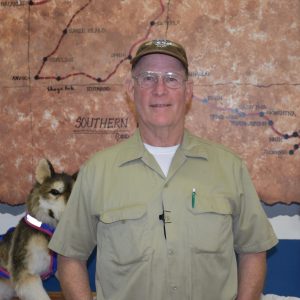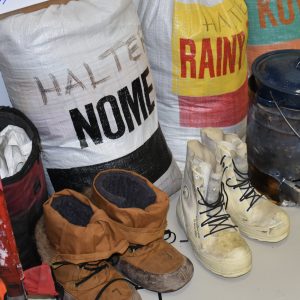The Iditarod Air Force is an integral part of the race. From 26 to 29 volunteer pilots use their own time and planes to fly in supplies to the checkpoints along the Iditarod Trail. Two weeks before the race, these brave aviators begin taking in the mushers’ drop bags of supplies and straw. While the drop bags of supplies can sometimes be mailed to villages that have post offices, the IAF flies the bags to the more remote villages. They must also fly in the mushers’ fuel, Heet, used to boil water, as it’s considered a hazardous material and cannot be mailed.
As the race progresses, the volunteer pilots begin flying veterinarians between checkpoints, taking the Teacher on the Trail™ to the next stop on the trail, and more. Mushers must sometimes “drop” dogs. This means that the dogs are left behind due to illness, injury, or just not wanting to run. They are cared for by volunteers until the Iditarod Air Force can fly them out to one of the airport hubs: Anchorage, McGrath, Unalakleet, and Nome. From the hub, the dogs are all taken to Anchorage to be cared for by their handlers or by women at a nearby correctional facility who have earned the privilege until the mushers return.
- Joe Pendergrass of the Iditarod Air Force. Photo: Iditarod Media
- True or false?
- Musher drop bags
Joe Pendergrass has been an IAF pilot since 1998. He came to speak with us at camp and told wonderful stories of flying along the trail. We asked if the dogs are well behaved in the plane. “Usually,” was his response. If one gets loose in the back of the plane, or if he forgets to let them “do their business” before the trip, it can get messy. Most of the time, the dogs curl up and go to sleep.
Joe told stories of strong winds, white outs, instruments in the cockpit freezing, and more. Precautions in the harsh conditions include heaters in the cockpit, covering the parked planes to keep off the ice and snow, and flying only in daylight. The pilots wear warm gear just in case they have an emergency landing and have to survive in the cold.
The excitement of the race, helping others, and the camaraderie keep these men and women pilots coming back year after year.





